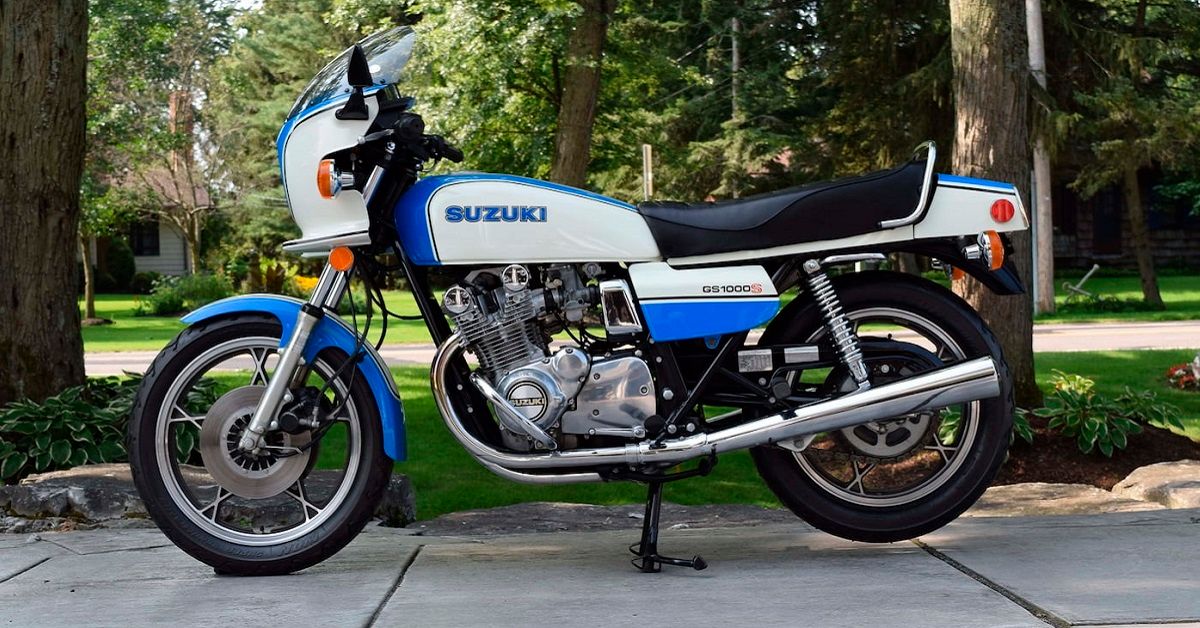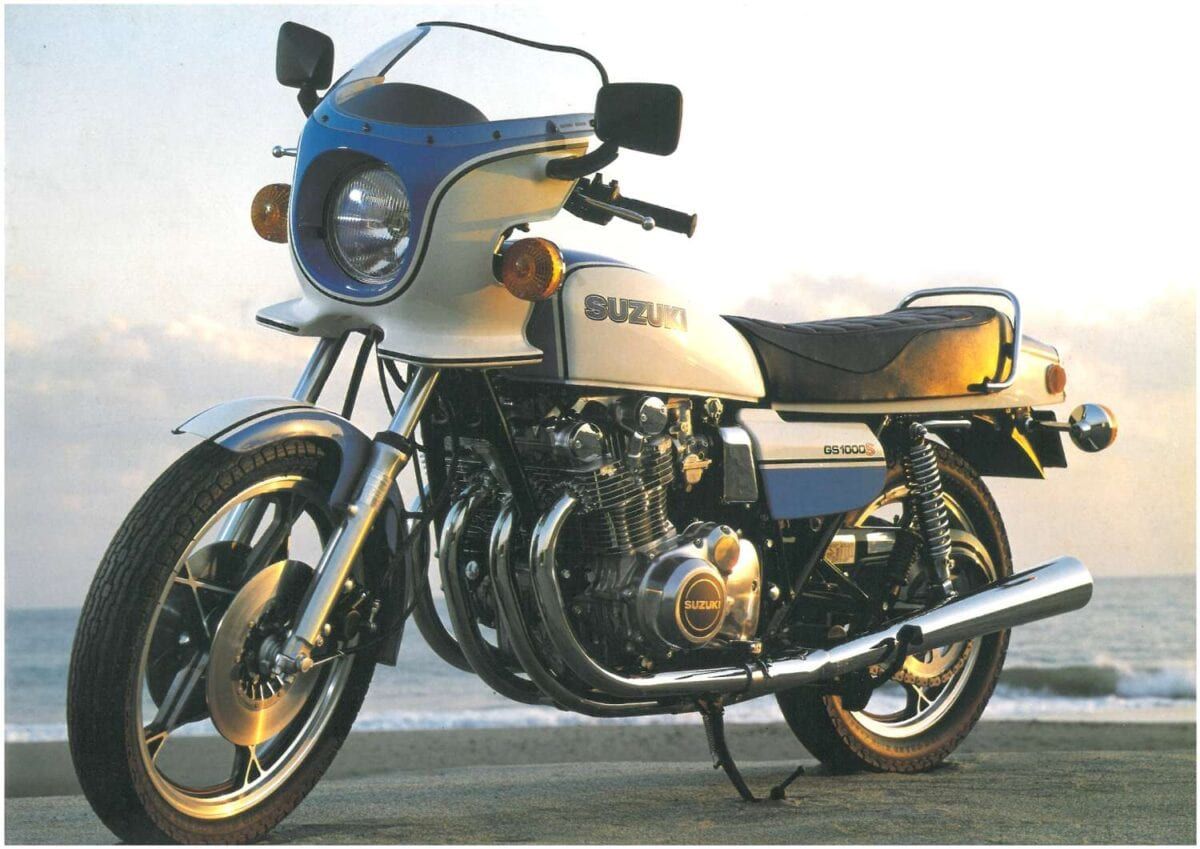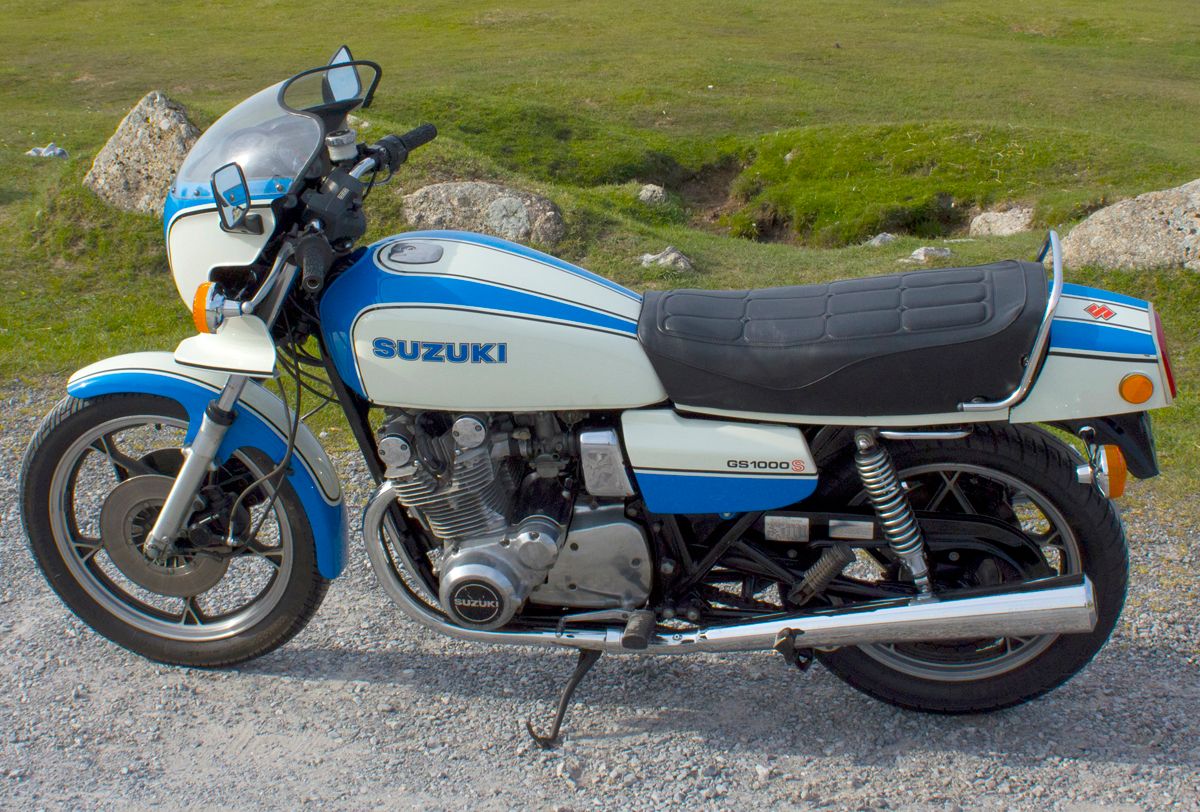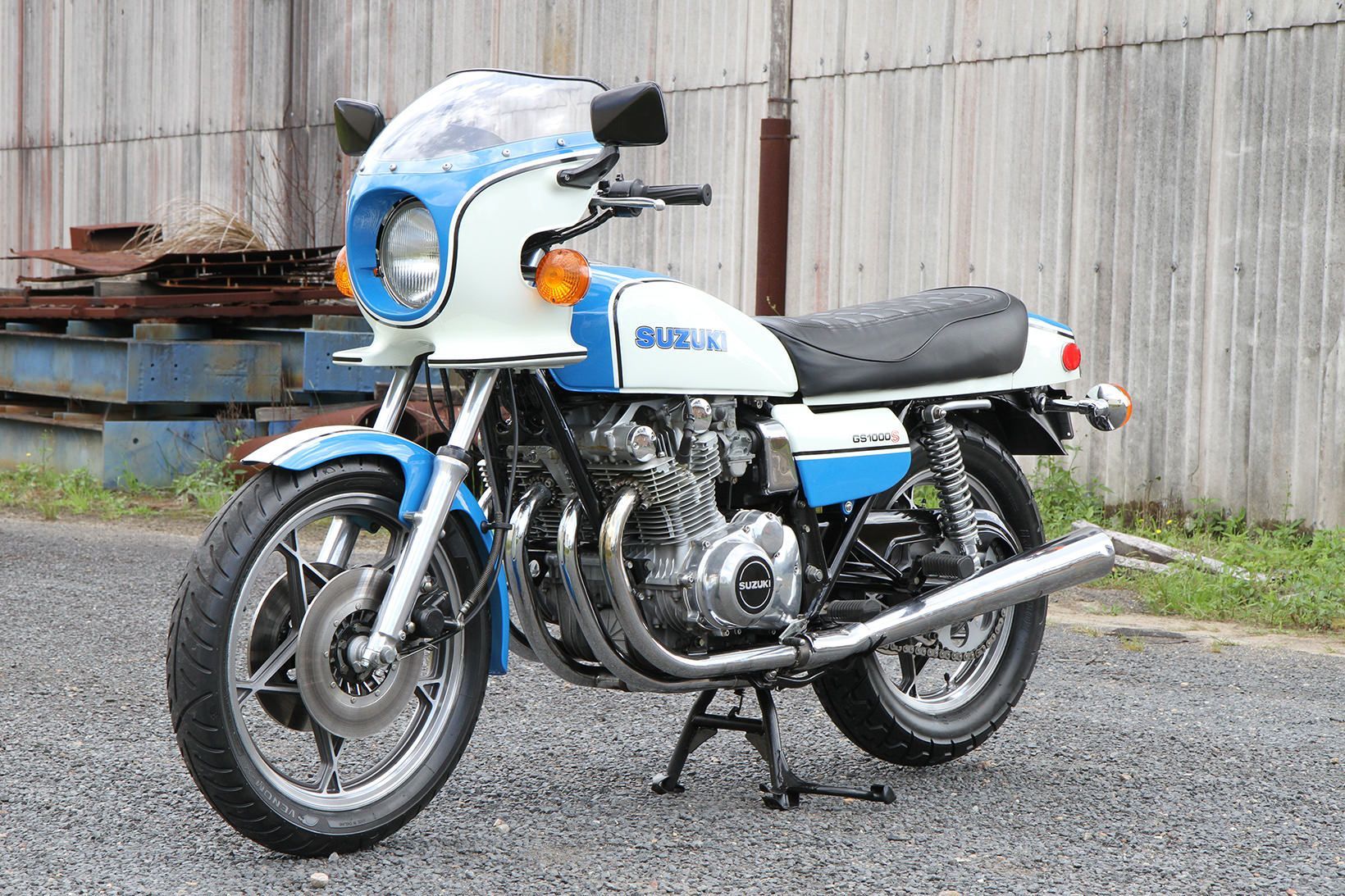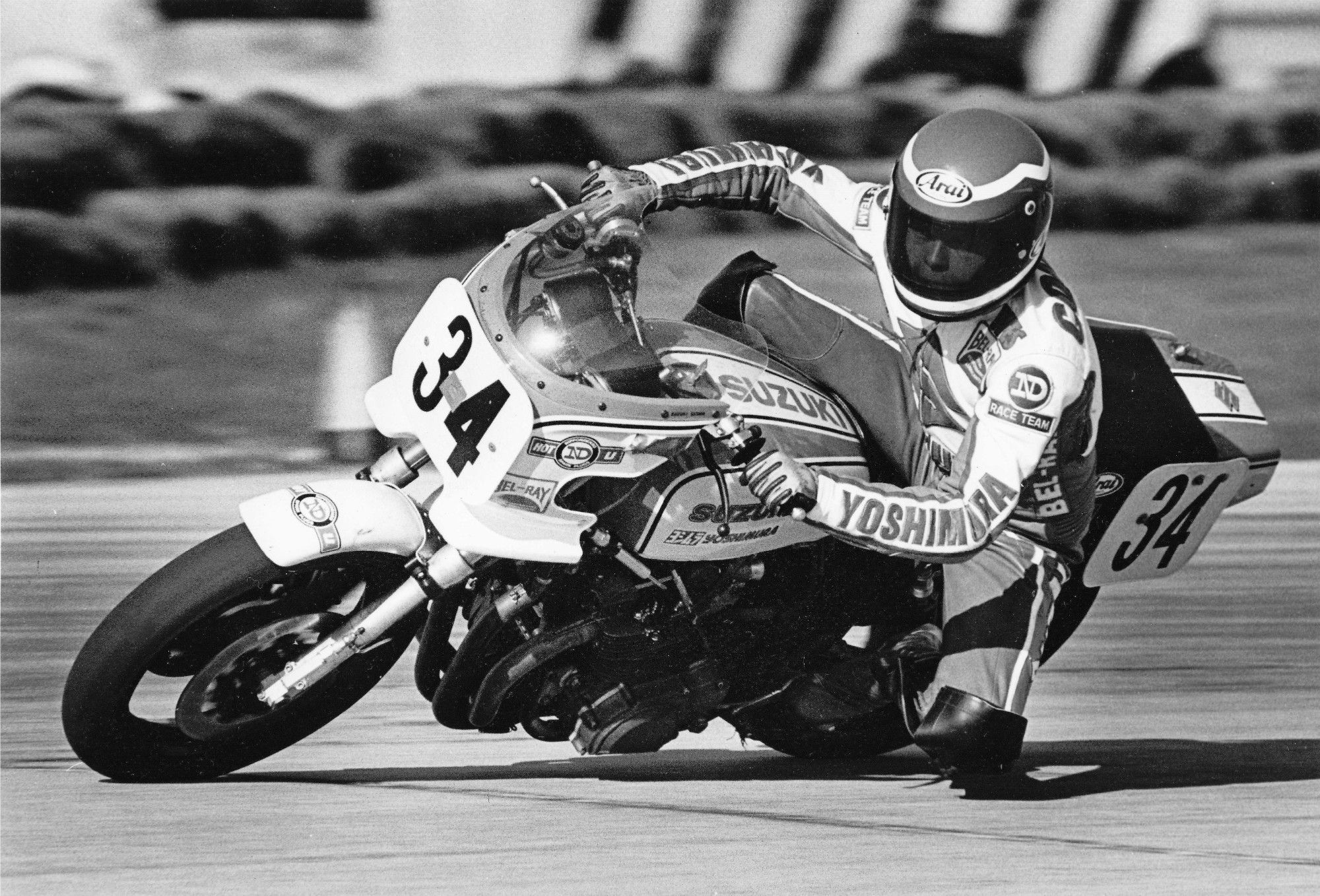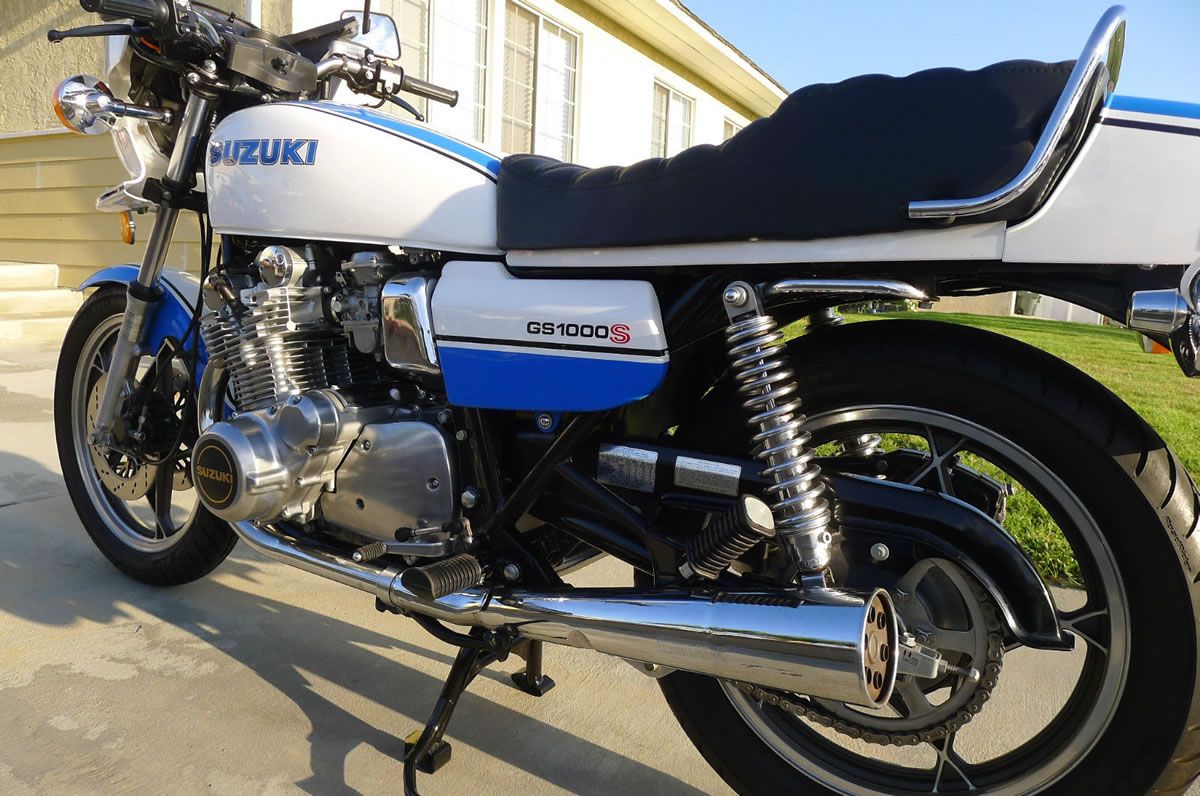The 1970s saw a boom of nimble Japanese motorcycles landing on American shores. Leading the charger were Yamaha motorcycle's two-cylinder XS650 and Honda's four-cylinder CB750. Though successful in motorcycle racing, Suzuki lagged behind its Japanese competitors in American motorcycle sales. The GS750 was a four-cylinder, lighter than even the CB750, but Suzuki still struggled to differentiate itself.
In 1977, the Suzuki GS1000 changed the motorcycle market forever. Suzuki's 1000 cc superbike could hang with a CB750 in the corners and beat a Harley Davidson in a drag race. Without the GS1000, there likely would never have been a legendary Suzuki GSX Sportbike or Suzuki Hayabusa series.
This 1978 1-liter superbike blew past the competition and put Suzuki motorcycles firmly on the map.
The Suzuki Story
In 1909, Michio Suzuki founded a company to make looms for the silk business. In the late 1930s, he began to prototype a compact passenger car; he researched an innovative, liquid-cooled, four-stroke, four-cylinder engine. World War Two put a stop to the company's early pursuit of cars, and after the war, Suzuki made a name for itself selling tiny, two-stroke, bicycle-based motorcycles. In the 1950s, Suzuki finally launched a line of technologically advanced compact cars. Suzuki would continue with advanced, efficient vehicles such as the classic Suzuki Samurai SUV, its exciting Jimny mini SUV redesign, and quirky Mighty Boy truck. But into the 1970s, Suzuki continued selling outdated two-stroke motorcycles. Some of them even made our list of the worst Japanese Motorcycles ever made.
Rumor has it that Suzuki's answer was to buy and reverse engineer a 4-cylinder air-cooled, dual overhead cam Kawasaki Z1-900 engine (the predecessor to the Top Gun Kawasaki GPZ900R). The result was Suzuki's GS series, their first full lineup of four-stroke motorcycles. In 1976, Suzuki launched the GS400 parallel-twin and the four-cylinder GS750. The GS750 featured a dual cradle frame, telescopic front forks over a front disc brake, and two rear shocks. The motorcycle was lighter and nimbler than the aging Honda CB750, the Yamaha XS750, and even the Kawasaki 900. But Suzuki still had a problem: despite 1000 cc motorcycles still being illegal in Japan, its three Japanese competitors offered 1000 cc bikes in the horsepower crazy American market.
The 1000 CC Club
The American market demanded 1000 cc motorcycles. By the late 1970s, Honda offered the GL1000 Gold Wing, Kawasaki the KZ1000, and Yamaha the XS11. But these cruisers were designed around 1-liter engines; they were too heavy to match the responsive handling of better-selling Japanese sportbikes. The brand new GS750 was the lightest 750 available. Instead of designing a large cruiser, Suzuki redesigned the engine in the GS750. To increase displacement to 1-liter, the company added 14.6 mm to the stroke. But the engine upgrades did not stop there; the engineers also updated the engine to make it lighter than the 750. The resulting motorcycle would weigh just over 500 lbs.
A chain drive and five-speed transmission connected this new 80 horsepower engine to the rear wheel. This new motorcycle also benefited from air and oil dampened front forks and dual front disc brakes. The bike also received a facelift and five-spoke alloy wheels. Suzuki named its new model the GS1000, and the world's lightest and most advanced 1000cc superbike was born. Here are more specifications of the GS1000E.
A Crowd Pleaser
In 1978, British sports bikes were finicky and expensive, new Harley Davidsons often weighed over 800 lbs, and even the Honda CB750 sportbike was showing its age. The Suzuki GS1000 was a complete revelation. This superbike took the motorcycle market by storm.
In 1978, Peter Rotherham was a motorcycle mechanic at a dealership in the U.K. who was daily riding a Honda Goldwing. When the GS1000 was released, it impressed him so much that he and his head mechanic each immediately bought one. Suzuki had only allotted the dealership two of the superbikes, and the business people were not happy: they repurchased the two motorcycles from the mechanics--at an even higher price! Rotherham bought the next GS1000 he could get his hands on. Read his story and more about the GS1000 launch on SuzukiCycles.org.
The first year of the 1-liter Suzuki featured several variants: The first 1978 GS1000 motorcycles arrived with conventional shock absorbers and alloy wheels. Later in 1978, GS1000E motorcycles arrived sporting chrome-plated gas/air rear shocks. During 1978, the demand for the GS1000 was so high that Suzuki ran out of the new alloy wheels and assembled an unspecified number of GS1000 motorcycles with dual front disc spoked wheels. Finally, the GS1000S motorcycles had a sportier appearance, mainly because of a faring around the front headlight.
A Racing Pedigree
Suzuki's lightweight and reliable GS1000 superbikes dominated motorcycle racing. Famed motorcycle tuner Pops Yoshimura set up the GS1000 for road racing, and the team couldn't seem to lose. The GS1000 came in first at the 1978 Daytona Superbike race, the Japanese 1978 Suzuka 8 Hours, the 1979 Australian Castrol Six Hour race. It also won two Formula TT World Championships in 1980 and then in 1981, and two AMA Superbike national championships: 1979 and 1980.
Racing championships drove even higher sales numbers. Suzuki even released a limited edition GS1000S in powder-blue and white racing livery, dedicated to the AMA Superbike rider Wes Cooley.
Conclusion
The 1978 Suzuki GS1000 blew past its competition with drag-race power and sportbike handling: it was the first superbike. Engineering the 1978 GS1000 put Suzuki on the map and paved the way for the beloved GSXs, GSRs, and Hayabusas of today.

